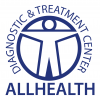What is a Home Care Coordinator and What Do They Do?
Have you ever wondered who ensures that patients receive the right help at the right time, even after leaving the clinic or hospital? Behind every smooth transition and personalized plan is someone quietly orchestrating it all. In this article, we’ll uncover exactly what a home care coordinator is—and why their role is far more vital than most people realize.
Contact us to know more about home care coordination services.
TL;DR:
A home care coordinator ensures patients receive safe, timely, and personalized supervision at home after leaving medical facilities. They combine clinical, communication, and organizational skills to assess needs, individualized plans, and connect patients with healthcare and community resources. Through holistic assessments, well-structured plans, and ongoing coordination among professionals, they maintain continuity. Regular monitoring and adjustments keep the plan effective, ensuring patient safety, progress, and satisfaction over time.

What Skills Does a Home Care Coordinator Need?
A home care coordinator is the glue that keeps a patient’s home-based safe, timely, and person-centered. Their role requires a combination of clinical expertise, communication finesse, organizational precision, and ethical leadership. The following skill areas form the foundation of effective coordination in home-based supervision:
- Clinical Judgment & Assessment
They must understand medical histories, medications, and test results to spot problems early and match to each patient’s needs. - Communication & Interpersonal Skills
Coordinators explain medical terms in simple language, help families make decisions, and keep everyone—patients, families, and providers—on the same page. - Care Planning & Documentation
They create and update plans, set clear goals, and record changes accurately, often using electronic health records to keep information current and reduce errors. - Systems Navigation & Resource Linking
They connect patients with needed services such as home health, equipment, or community support like transportation or food assistance. - Quality, Safety & Infection Control
Coordinators ensure the home environment is safe, prevent infections, and make small improvements to the processes when needed. - Data & Technology Skills
They use telehealth and remote monitoring tools to track symptoms and vital signs, helping guide timely decisions. - Leadership & Cultural Competence
Coordinators lead teams, respect cultural values, protect privacy, and manage time and priorities effectively.
Together, these skills enable home care coordinators to bridge clinical expertise with compassionate, community-based care, ensuring that every patient receives the right support at the right time.
HAssessing the Patient’s Needs and Environment
Assessment in home care is holistic—it looks at the whole picture of a patient’s life, not just their medical condition. This includes medical, functional, psychosocial, environmental, and caregiver factors that together shape how safe and effective home-based care can be.
- What a Thorough Assessment Covers
A complete assessment starts with the medical profile, reviewing diagnoses, recent hospitalizations, current medications (including how well they are taken and any side effects), allergies, and advance directives. The functional status is also reviewed, focusing on how well the patient performs daily activities like bathing, dressing, eating, and moving around, as well as managing money, shopping, and taking medications.
Cognitive and mood screening helps identify issues like delirium, dementia, depression, or anxiety that may affect safety and planning. Assessing social support and caregiver capacity is equally important—this includes comprehending who provides it, whether they can continue doing so, their stress levels, and what backup plans exist if caregivers become unavailable.
Finally, the home environment is evaluated for safety and comfort. This involves checking for stairs, lighting, slip hazards, and appropriate storage of medications. Heating, cooling, and infection control practices—such as maintaining clean surfaces and having isolation space if needed—should align with CDC-level home infection control guidance.
- How Assessments Are Done
These assessments combine standardized tools with clinical interviews. Using validated questionnaires and checklists improves accuracy, especially for patients with complex needs. Observing the home can reveal important details like clutter, lighting, or pets that may not come up in interviews. Family members and caregivers are engaged during the intake process since they often provide key insights into routines, medication schedules, and daily challenges.
All findings must be clearly documented and shared with the team. Accurate, timely records help ensure that everyone involved can build and follow a safe, coordinated plan.
Priority Outcomes from Assessment
A strong assessment leads to practical actions:
- Immediate safety fixes such as installing grab bars, removing loose rugs, or using medication organizers.
- Short-term clinical needs like wound care, IV therapy, or medication adjustments.
- Social interventions including meal delivery, transportation, or caregiver respite.
- A documented baseline so future visits can detect any changes in the patient’s condition or environment.
Designing and Planning a Personalized Care Plan
An effective plan turns assessment findings into a clear, organized set of actions that outline who does what, when, and why. It starts with person-centered goals that are realistic, measurable, and meaningful to the patient, focusing on what matters most in their daily life. The plan also includes interdisciplinary actions that define each team member’s responsibilities, such as nursing care, therapy, medications, and social support, along with safety instructions and contingency plans for emergencies or changes in condition.
Each plan must meet documentation and regulatory requirements to stay compliant. U.S. home health guidance requires that plans reflect ordered services and be reviewed and signed by the responsible clinician at set intervals. For programs such as Medicare, this includes periodic review and recertification within specific timelines to ensure the plan remains current and accurate.
The design process works best when the patient and family are active partners. Shared decision-making helps create realistic goals and encourages better adherence. Plans should be easy to follow, with clear steps, contact information, and simple schedules. Outcome measures like pain levels or wound healing should be tracked, with defined points for review or revision. Making the plan accessible in both paper and electronic formats keeps it coordinated, safe, and responsive to the patient’s evolving needs.
Coordinating Healthcare Professionals and Additional Services
Coordination turns a plan into real, delivered care, it’s both about organizing logistics and managing relationships across everyone involved. The process includes scheduling and sequencing visits so that it flows smoothly without overlap or gaps, such as arranging nursing and therapy visits in the right order. It also involves keeping all team members informed. Coordinators send concise updates to primary care providers, specialists, pharmacies, therapists, and community programs.
Another core task is arranging referrals and authorizations—securing medical orders, equipment approvals, transportation, or home modifications. Coordinators also manage transitions of care, ensuring that when a patient leaves a hospital or clinic, the home plan matches discharge instructions and follow-up appointments are confirmed.
Tools such as shared electronic records, structured communication formats, and telehealth check-ins make coordination more reliable. Telehealth, in particular, helps maintain connection between visits when it’s built into the workflow. Beyond medical care, strong coordination extends to social and community services. Effective coordinators identify local supports like meal programs, respite care, transportation, and housing assistance, ensuring patients are connected through warm handoffs rather than simple referrals.
Ongoing Monitoring and Adjustments to the Care Plan
A plan is a living document—it must be monitored and adjusted regularly to stay effective and safe. Ongoing review ensures that it remains aligned with the patient’s goals, condition, and daily realities.
What to Monitor
Monitoring focuses on several areas. Clinical indicators such as vital signs, glucose levels, wound measurements, pain scores, weight, and medication side effects help track progress toward medical goals. Functional progress includes activities of daily living (ADLs), mobility, and therapy milestones. In addition, patient-reported outcomes offer insight into how the plan feels and functions from the patient’s perspective. Finally, safety signals such as new falls, infection signs, cognitive decline, or medication adherence problems must be watched closely, as they often require immediate response.
How Monitoring Is Done
Monitoring combines regular in-person visits with telehealth or remote monitoring when appropriate. Studies have shown that electronic monitoring systems can alert clinicians to early signs of deterioration, but their success depends on how quickly and effectively alerts are reviewed and acted upon. Scheduled reassessments are built into the plan to keep it current, for example, daily checks for unstable patients or formal reviews every 60 days for certain regulated home health programs. Data gathered from monitoring guide decisions about whether to escalate care, adjust therapy frequency, add supports, or discharge when goals are met.
Key Takeaways
- Role and Importance of a Home Care Coordinator
Coordinators ensure patients receive safe, timely, and person-centered care after leaving medical facilities. They bridge medical, social, and logistical aspects of it, turning complex needs into smooth, organized support that keeps patients at home and on track. - Essential Skills for Effective Coordination
They combine clinical judgment, strong communication, and leadership with organizational and technological skills. They assess health data, manage plans, link community resources, ensure safety, and guide teams to deliver coordinated and compassionate supervision. - Holistic Patient Assessment
Comprehensive assessments cover medical, functional, emotional, and environmental factors, along with caregiver capacity. By identifying risks, social needs, and safety issues, coordinators create a full picture that supports tailored and effective care. - Designing and Implementing a Personalized Plan
Each plan translates assessment findings into specific, measurable goals with clear responsibilities for every team member. Plans are co-created with patients and families, reviewed regularly for compliance, and updated as needs evolve to ensure safety and progress. - Coordination, Monitoring, and Ongoing Adjustments
They manage communication, referrals, and transitions between settings while using tools like telehealth and shared records to maintain continuity. Continuous monitoring of clinical and functional indicators allows timely adjustments, keeping the plan safe, current, and responsive.
FAQs:
- What is the role of the care coordinator?
The coordinator makes sure patients receive safe, timely, and organized care by connecting them with providers, managing plans, and tracking progress. - What is the role and responsibility of a coordinator?
They organize and oversee care by scheduling visits, sharing updates between providers, arranging services, and ensuring safety and compliance. - What is an example of a care coordinator?
A nurse who manages a patient’s recovery at home after discharge, coordinating therapy, medications, and follow-ups. - What is another name for a care coordinator?
Care manager, case manager, or patient care coordinator.
Sources.
Karam, M., Chouinard, M. C., Couturier, Y., Vedel, I., & Hudon, C. (2023). Nursing Care Coordination in Primary Healthcare for Patients with Complex Needs: A Comparative Case Study. International journal of integrated care, 23(1), 5. https://doi.org/10.5334/ijic.6729
Albertson, E. M., Chuang, E., O’Masta, B., Miake-Lye, I., Haley, L. A., & Pourat, N. (2022). Systematic Review of Care Coordination Interventions Linking Health and Social Services for High-Utilizing Patient Populations. Population health management, 25(1), 73–85. https://doi.org/10.1089/pop.2021.0057
Möckli, N., Simon, M., Denhaerynck, K., Martins, T., Meyer-Massetti, C., Fischer, R., & Zúñiga, F. (2023). Care coordination in homecare and its relationship with quality of care: A national multicenter cross-sectional study. International Journal of Nursing Studies, 145, 104544. https://doi.org/10.1016/j.ijnurstu.2023.104544
